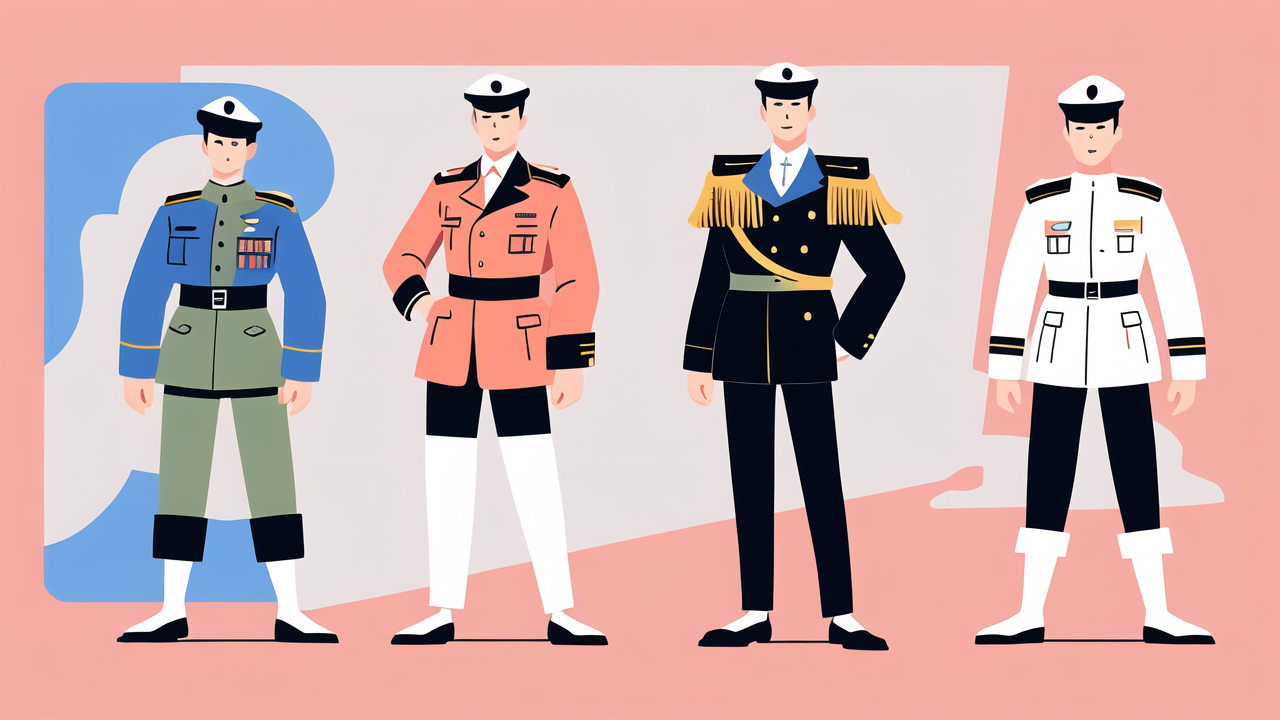Forgot Password
Enter your email address and we will send you a link to reset your password.For security sign in links are valid for 30 minutes.
Your cart is empty
Early American military apparel was heavily influenced by European military fashion which settlers brought to the New World. The clothing was practical and designed to endure the harsh conditions of early colonial life. The Revolutionary War saw the official adoption of more formal uniforms which aimed to instill pride and unity among troops. The iconic blue Continental Army uniform featured contrasts of red and white, symbolising the birth of the nation and distinguishing them from British redcoats.

The design of military uniforms in the United States has been significantly influenced by technological advancements. Innovative materials such as moisture-wicking fabrics and temperature-regulating fibers have revolutionized comfort and functionality in the field. Moreover, advancements in fabric technology have enabled uniforms to offer better camouflage and protection, incorporating body armor compatibility. Enhanced night vision capabilities have also been woven into uniforms, providing soldiers with crucial advantages during nighttime operations. These technological improvements not only boost the effectiveness of military personnel but also enhance their safety in various combat scenarios.
Several factors have shaped the aesthetics and functionality of U.S. military uniforms. First, historical battles and military campaigns impacted design, leading to pragmatic changes tailored to different combat environments. Second, government regulations and standards have consistently influenced uniform components to ensure conformity and meet performance criteria. Third, fabric technology and advancements in materials science have significantly affected the durability and comfort of uniforms, adapting them for modern warfare needs. Finally, cultural factors and public perception have also played a role in shaping the visual aspects of military attire, reflecting national identity and values.
The development of military uniforms in the United States tells a fascinating story of evolution shaped by historical events. Since the Revolutionary War, uniforms have undergone extensive transformations reflecting changes in warfare tactics, technological advances, and societal norms. Notably, the Continental Army's blue coats, with variations in color and design signified rank and unit, laying foundational aspects of structured military attire. Over the centuries, these uniforms evolved from mere functional military gear to symbols of national pride and identity during key conflicts such as the Civil War and the World Wars. Each era's uniform adaptation highlights responses to specific needs like camouflage or armor enhancements, demonstrating a direct link between the demands of warfare environments and the uniforms' evolution.
Military uniforms do more than identify soldiers. They are key in forming a national identity. Throughout U.S. history, uniforms have represented values like bravery and unity. Each style and symbol selected for a uniform is chosen with care. They reflect the nation’s identity and ideals. For example, the color blue in early U.S. uniforms symbolized freedom and justice. These garments help instill a sense of pride and solidarity among service members. They unify the various branches under one identifiable image that resonates with the citizens. Ultimately, military uniforms serve as a visual expression of a nation's spirit and history.
Military apparel is much more than just clothing for soldiers. Each piece of uniform is steeped in symbols and traditions that hold great significance. For instance, stripes and medals often indicate rank and accomplishments. Similarly, colors and badges can symbolize specific military branches or units. These elements not just identify but also instill pride among soldiers, reminding them of their duties and the historic legacies they carry forward. Such symbols and traditions play a vital role in maintaining the morale and unity of military forces.
The evolution of military attire is significantly shaped by advancements in technology. Integrating modern tech into military uniforms not only enhances performance but also improves the safety and efficiency of the personnel. Here are some trends we're witnessing:
These technological integrations not only modernize military uniforms but substantially contribute to operational success and troop safety.
The shift towards eco-friendly practices in military uniform manufacturing marks a vital change. As environmental awareness rises, the U.S. military is increasingly adopting sustainable materials and processes to produce their uniforms. This includes using recycled fabrics, reducing water consumption, and minimizing chemical use. This move not only helps in conserving the environment but also aligns with broader global sustainability goals. Moreover, adopting these practices can also lead to cost savings and improved soldier comfort, adding substantial value to the operational effectiveness of the military.
As warfare evolves, so too must military uniforms. In modern conflict environments, the role of uniforms is not only to mark identity but also to provide tactical advantages. Innovations are focusing on enhancing camouflage, improving body armor integration, and ensuring compatibility with various climates and terrains. Additionally, the increasing use of technology in warfare demands uniforms that can support advanced equipment such as sensors and communication devices. Thus, military attire is set to become smarter, more adaptive, and customized for specific roles, ensuring that soldiers are equipped for the demands of modern warfare environments.